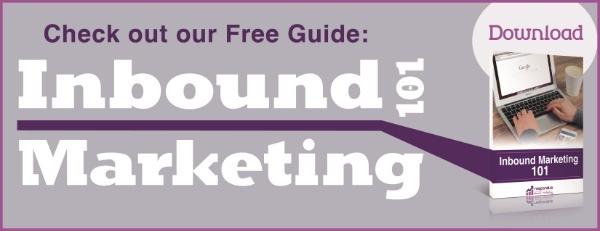The human mind is designed to learn on an opt-in basis. When someone is genuinely interested in learning, they learn faster, retain the information longer, and are more likely to integrate the knowledge into their overall knowledge base, creating stronger cognitive connection points for future learning. When information is pushed, the person naturally resists the experience and decides to minimize their time and depth with the process.
Pull learning is centered on the learners’ decisions and preferences about learning, their relationship to the meaning of the content, and the ultimate value of the curricula. Their identity becomes vested in “getting what it wants” and owning their destiny.
The same goes for inbound marketing! Unlike traditional outbound marketing tactics like buying ads, buying email lists, and praying for leads, inbound marketing is centered on pulling people where they naturally want to be. By aligning the content you publish with your customers’ interests, you naturally attract inbound traffic that you can then convert, close, and please over time. When your content is specifically designed to appeal to your ideal customers, you’re attracting qualified prospects to your business and keeping them coming back for more. The right content at the right place at the right time is the type of marketing that people love.
Proof That It Works
- 93% of B2B organizations rely on content marketing in order to build brand awareness and generate leads
- Customers who receive email newsletters spend 82% more whenever they buy from the company
- 77% of B2B markets use a blog as part of their marketing mix
- Companies that blog generate 126% more leads than companies that don’t
- 78% of B2B buyers start their research with an online search, which is why SEO is so important
- Companies that nurture leads will generate 50% more sales-ready leads at a 335% lower cost
Inbound marketing tactics are being increasingly adopted because they simply work.
One of the keys to success with inbound marketing is building trust and relationships with both prospects and customers – which isn’t always a quick or easy process. If you aren’t blogging frequently about what your audience cares about and if you aren’t creating more related and relevant offers to follow up on your first campaign, it will be harder to find and maintain those relationships. Losing those relationships happens more often and more quickly than you may think. As your inbound marketing strategy matures, just be sure to track important key performance indicators (KPIs) for your blog and landing pages and you will see the results you’re looking for start to grow.
By generating strong, industry-leading content, your ideal customers will gravitate to your brand and spread the word. You don’t have to push content on people who didn’t ask for it and don’t have any interest in it. It’s more beneficial in the long run to place the power in the customer’s – or learner’s – hands. People react positively to what seems naturally for them – something so effective and pleasing they’d will it for themselves.
Want to dive deeper into the inbound marketing methodology? Check out our free white paper to learn everything you need to know!
